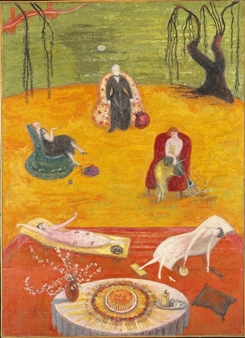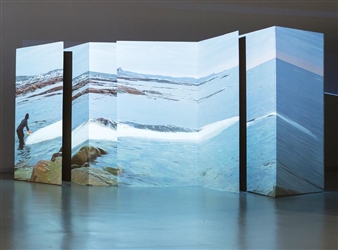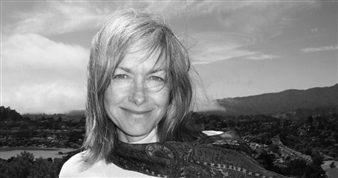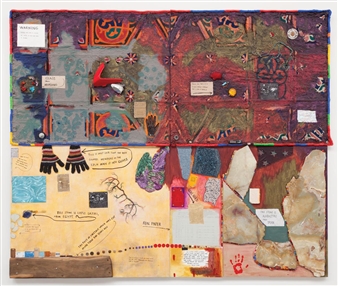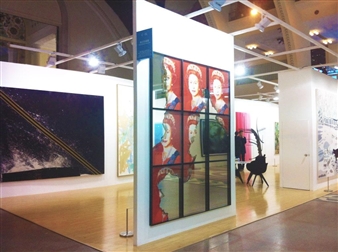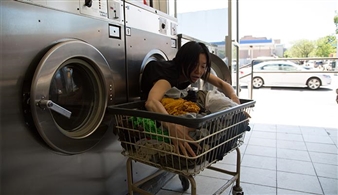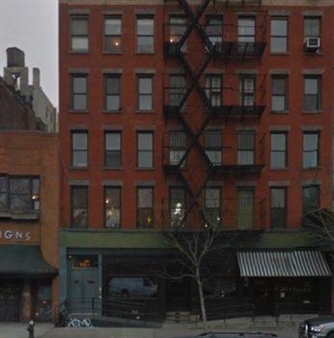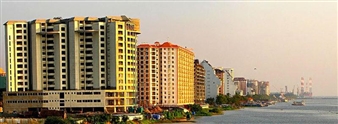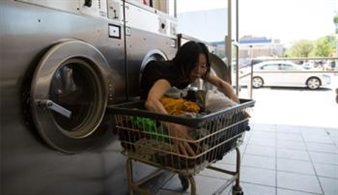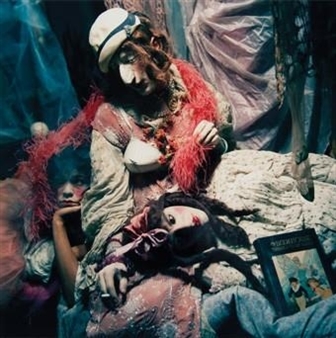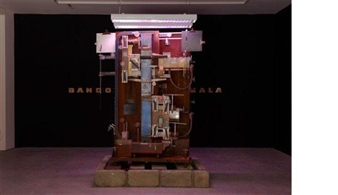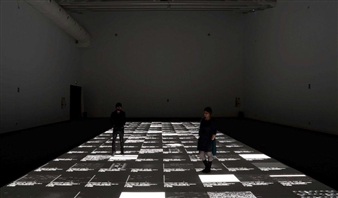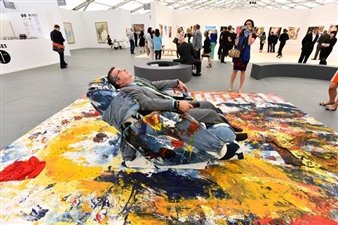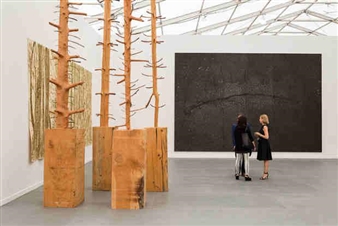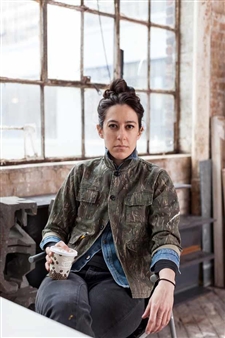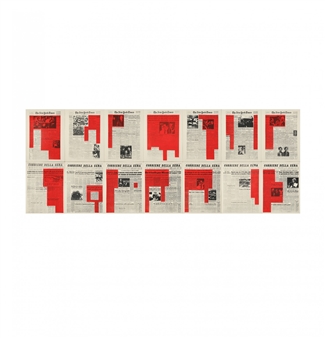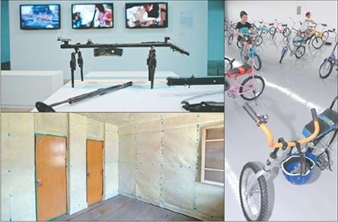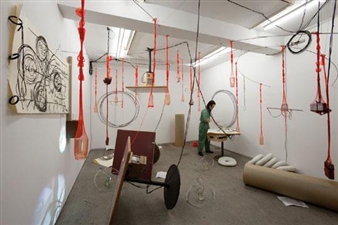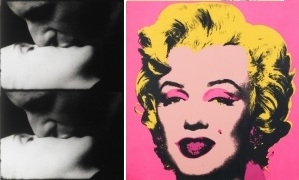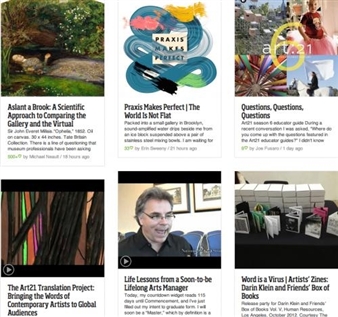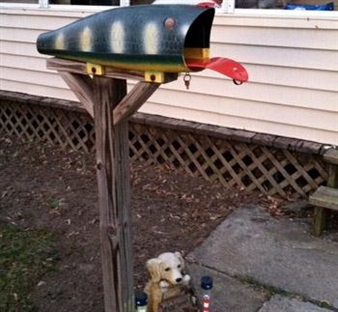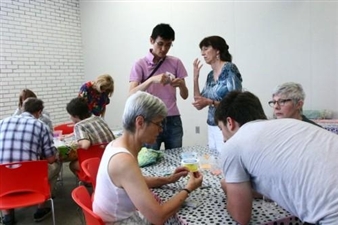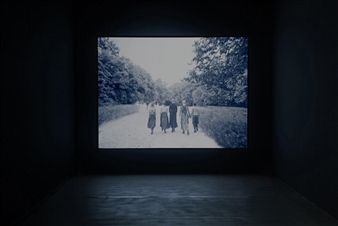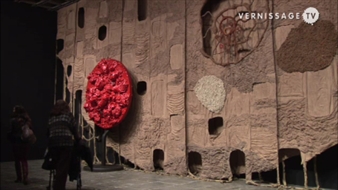PRESS & PUBLICATIONS
I love art by men.
Read MoreThis past November, Shanghai’s art season opened with a week of frenzied activity that comprised more than 60 events, all timed to coincide with the Shanghai Biennale, now in its eleventh edition.
Read MoreSince 1963, from its roots in an emergency fundraising drive for the fledgling dancer Merce Cunningham (led by Jasper Johns, Robert Rauschenberg, and John Cage), the Foundation for Contemporary Arts has endured as an artist-led enterprise to support other artists, with the awarding of unrestricted $40,000 grants among its primary pursuits.
Read MoreThe Foundation for Contemporary Arts, a nonprofit arts organization founded in 1963 by John Cage and Jasper Johns, has announced the recipients of its annual awards.
Read MoreWith winter just weeks away, it is time to preview the season’s most notable museum exhibitions and biennials.
Read MoreThe fourth edition of ART021 opened to Shanghai today, bringing crowds of primarily local and regional collectors to the city’s Shanghai Exhibition Centre.
Read More“Delicate Cycle” an exhibition by Japanese artist Aki Sasamoto will run through January 2, 2017, at the Sculpture Centre, New York.
Read MoreIt has been a wild year for the Lower East Side gallery district, with veteran dealers closing, all sorts of enterprises opening up and relocating, and at least one blue-chip macher plotting a grand and ambitious entrance.
Read MoreThe Kochi-Muziris Biennale, which has quickly become one of the most closely watched regularly scheduled international exhibitions after its first two editions, announced plans today for its third, which will run from December 12, 2016, through March 29, 2017, in Kochi, India.
Read MoreToday, Long Island City’s SculptureCenter announced a fall programming schedule that continues its commitment to an all-female roster of artists in 2016.
Read MoreLast September, SculptureCenter announced that all of its solo shows in 2016 would feature work by female artists—a plan that, in an ideal world, would not be treated as breaking news, but here we are.
Read More10 Exhibitions to See in Los Angeles
Read MoreThree art and culture experts, including the New Museum’s tech-savvy curator Lauren Cornell, talk about the complex research, storytelling, and economic issues related to Michael Stevenson’s sculpture “The Fountain of Prosperity,” which is currently on view.
Read MoreInspired by the riverside location of the Dojima River Forum, which is hosting this year’s fourth Dojima River Biennale 2015 in Osaka, artistic director Tom Trevor sees this city of waterways as a metaphor for contemporary information flows, and the “confluence of multiple temporalities within globalized culture today.
Read More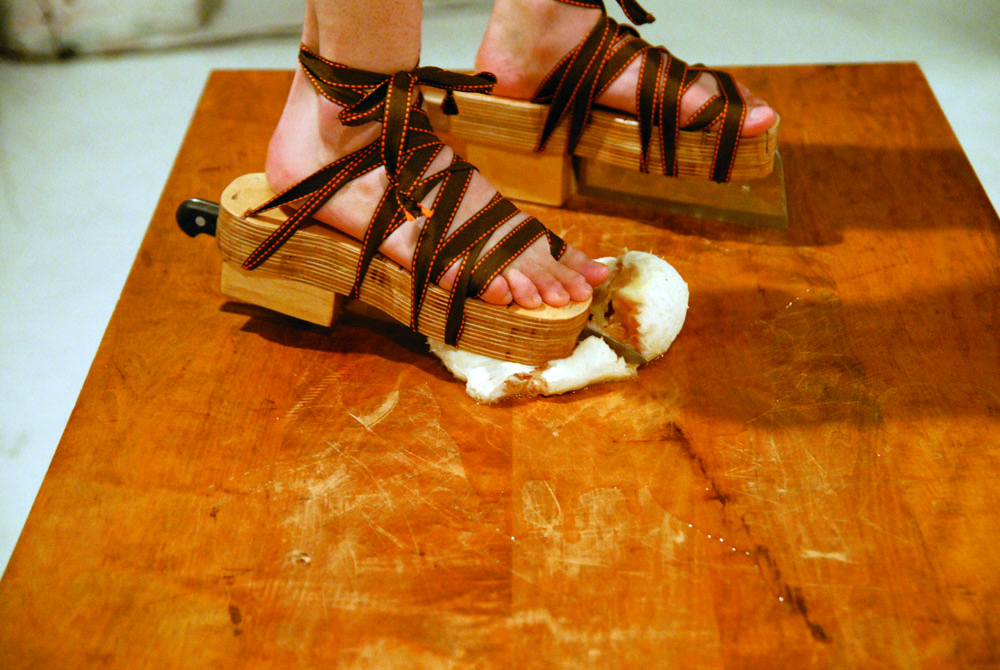
Stages of Laughter in "Art in America" by APT artist Aki Sasamoto AKI SASAMOTO A SOMBER ETHICS CLASS on a sticky hot Tokyo summer day. A pencil rolled off a dozing student’s desk, and my friend and I both saw it fall. We were sitting on opposite sides of the classroom, but we sliced the boring air with laser-speed eye contact. We gave each other a nod to acknowledge our shared witness, and we giggled. As we developed chuckles in reaction to synchronized agreements, we also discovered laughable moments around missed connections wherever we were. Every time I caught something odd and turned to her only to find that she missed it, I would hit her hard on the head, forehead, shoulder or leg. The slap was another form of acknowledgement, marking a glitch in our synchronicity. There were rules to the game: as my hand rose to smack her, she had to defend herself by taking a funny position or quickly commenting on the missed moment. If she succeeded, I wouldn’t hit her. It was an exercise of reflex. Slapstick was a popular form of comedy in Japan in the ’90s. That must have nurtured our combative nature. We’d laugh whether a slap hit or missed, and we’d spend school days fishing for a pencil-falling moment, just to see if it would lead to a nod or a slap. We each got better at anticipating what the other saw before the world happened. A GLOOMY DORMITORY common room on a misty Welsh evening. The students returned drenched, because nobody in the country seemed to use umbrellas. It struck me as funny. I wanted to share my observation with somebody, anybody, by nodding or slapping. But I couldn’t. At 16, I’d left my home for an international boarding school in the U.K. with two English sentences under my belt: “My name is Aki” and “This is a pen.” They didn’t take me far—even when I’d pull a pen from my back pocket as an aid—because I couldn’t comprehend the replies. So I ran off after greeting people with my pen before they opened their mouths. Desperate to make a friend, I would randomly smack people, and follow up with forced laughter. I thought this would clone my friend from home. I worried about skipping the nodding ceremonies, even though my intent was to express affection. But my language of slaps was inappropriate where hugging and kissing were the norm. So I learned. Humor develops over time. What has not already been experienced together is hard to share. In that year of miscommunication, I made only one friend: a “Little Aki” who lived inside me, who had grown there over the history of my life. She always agreed to laugh with me whenever I seized a notable moment. I internalized my observations of weird British behavior in order to perform my slapstick act with Little Aki. I no longer needed to hit other people. They didn’t want me to, and their reflexes weren’t good enough anyway. AN EXPERIMENTAL SHOW at Long Island City’s Chocolate Factory Theater. It was 2009, and I was performing Secrets of My Mother’s Child, which included a monologue about crying in the airport bathroom after seeing my mother to the gate for her flight. I was standing on a wooden table, stepping on grapefruits with a pair of knife-shoes—a wearable sculpture I’d made. As grapefruit juice dripped through holes in the tabletop and splashed loudly in cups on the floor, I spoke of my tears and a woman having diarrhea in the next stall. And that was when I heard an audience laugh at my work for the first time. I’d been making performances since learning about dance and Conceptual art at college in New England, and they were serious—I had no need for laughter because I was satisfied with my inner giggles. Secrets of My Mother’s Child came from sadness, and as I stood on the table I was preoccupied with the seriousness of my performance. Executing the scene even had a therapeutic effect on me. So it was a complete surprise for me when the audience started laughing hysterically. In retrospect, their response was predictable, because my performance was visually odd and full of toilet talk. I didn’t intend to make people laugh with my “serious” art, so I was puzzled. Now I knew how my European schoolmates felt when I hit them and laughed in their faces. AN OVERCROWDED ART STUDIO in an East Village basement. Miriam Katz, a curator who loves comedy and brings stand-up acts to museums, is visiting. I told her about how I received unexpected laughter at the Chocolate Factory, and my observations that some audiences respond to foreignness, seriousness, or the juxtaposition of them as humorous. Miriam told me about open mic nights, where comedy clubs allow anyone who signs up to try out a routine. I teach in an MFA program, and I’ve experimented by assigning my students to do a stand-up act at an open mic night. I think of it as a lab to find out what parallels artists can draw between the world of comedy and the world of art, and the blind spots of art we can identify as a result. Sometimes when artists are overly concerned with expressing a particular intent, it helps to try out a completely different form. By taking another perspective and measuring their tendencies against a new set of criteria, the essence of their work can suddenly emerge. I took on the challenge myself along with my students. My first stand-up routine was a miserable failure. Waking up the next morning with all the should-haves and could-haves was something I had never experienced with my “serious” work. As if I fell off a horse and needed to get back on to erase the trauma, I’ve gone back to open mics on my own, to test some of the episodes that I include in my performance work. But the rules of stand-up are different. There’s no sculpture for visual juxtapositions. There’s none of the seriousness that comes with performance art venues. Laughter is not my ultimate goal in art, but the open mic is the ideal place for me to pare my mixed-medium ideas down to plain speech, and hone an effective delivery. A RUNDOWN APARTMENT complex on a blooming Kyoto street. As part of my contribution for “Parasophia,” the Kyoto International Festival of Contemporary Culture, I made a diptych performance piece titled The Last Call, Wrong Happy Hour (2015). The work was site-specific; I fit myself in a storage unit buried in the ground, and streamed a talk on stand-up comedy to viewers outside. Then I moved on to Wrong Happy Hour, an installation where I offered the audience beer and casually preached about romance, aided by sculptural gags. At the end of my performance, I went behind a wall that was mobile and pushed it to evacuate the audience to the street. The shrinking bar provoked much laughter when it premiered at JTT Gallery in New York. Here in my home country, no one laughed. It surprised me at first, but then I remembered my private giggling with my teenage friend, and my silent laughter with Little Aki. Shortly after the Kyoto debut, an audience member wrote me a letter with a long description of how funny she found the piece. She and others in the audience may not have laughed out loud, but they nevertheless described the piece as omoshiroi, which means interesting or funny. As it turned out, the audience’s perception of the humor was as deadpan as my delivery. It was yet another moment of lost and gained friends. Comedy as a form of communication changes its rules with the landscape and the weather. I cannot expect the same reaction from a Japanese audience as I do from a New York one. And yet it came close. Like a cheap key ring whose ends won’t meet, I’d come back around, but I’d lost the key to that girlhood friend I once shared laughter with. Nobody travels between different places and mediums with me. I laugh even louder inside, with a deadpan serious face outside.
Read MoreWith 198 commercial dealers and three nonprofit galleries displaying all kinds of modern and contemporary art under its white, quarter-mile-long tent, the fourth annual New York edition of the Frieze Art Fair on Randalls Island is a lot for even two critics to cover, but we gave it our best effort.
Read MorePlenty of Frieze New York’s (14-17 May) ticketholders will have a close involvement with the art world, yet how many regard themselves as artists?
Read MoreArt-fair-going can be arduous and draining, physically and mentally. Luckily for Frieze New York visitors, the fair makes abundant concessions and considerations to fair fatigue, from the natural light-filled interior of the tent to the hip food vendors, not to mention the sprawling green park surroundings that offer respite and fresh air for those looking for a break from the grueling rigors of contemporary art viewing. And this year’s Frieze Talks program exhibits a strong streak of humor and irony. Inspired by the Frieze Talks’ lineup of artists, comedians, and provocateurs, we present a look at the humorous, playful, and un-serious side of Frieze New York.
Read MoreThe American sculptor uses recycled plastic to create works that bring to mind ancient civilisations.
Read MoreThe Frieze New York 2015 Art Fair comes to Manhattan this Wednesday May 14 to Sunday May 17.
Read MoreTo fully appreciate the works of 92 artists from 40 countries at the 2012 Gwangju Biennale, art fans will need stamina.
Read MoreAki Sasamoto, who has been based in New York since completing her MA at Columbia University School of Arts in 2007, created the performance/installation
Read MoreAki Sasamoto, who has been based in New York since completing her MA at Columbia University School of Arts in 2007, created the performance/installation
Read MoreAmong this week's openings: Warhol, Rockwell, Metsu, Smith, Dean and many more.
Read MoreWeekly Roundup of weekly art events
Read MoreBeginning in March, the Center for Curatorial Studies at Bard College (CCS Bard) presented 14 exhibitions and projects, including work by more than
Read MoreOften, by being in close proximity to another person, you find that you unconsciously start to influence each others’ thinking, and even each
Read MoreFranklin Street Works presents Kool-Aid Wino, a group exhibition curated by Brooklyn-based writer and critic Claire Barliant. The exhibition explores
Read MoreFifty-five artists were selected by curator Francesco Bonami and associate curator Gary Carrion-Murayari for the 2010 Whitney Biennial at the Whitney
Read MoreThe largest contemporary art exposition in Asia opened Friday at various venues with an extensive amount of pieces to see, hear, touch and experience.
Read More
Aki Sasamoto is a New York-based, Japanese artist, whose performance/installation works revolve around everyday gestures on nothing and everything. Sasamoto's installations are careful arrangements of sculpturally altered, found objects. Her performance activates the installation, revealing bizarre emotions behind daily life. Her works have been shown both in performing art and visual art venues in New York and abroad. Besides her own works, she has collaborated with artists in visual arts, music, and dance, in which she plays multiple roles of dancer, sculptor, or director. Sasamoto co-founded and co-directs Culture Push, in which diverse professionals meet through artist-led projects and cross-disciplinary symposia.
Selected exhibitions and performances include Strange Attractors, TAKE NINAGAWA, Tokyo, Japan (2011); 100 Years of Performance, Garage Center of Contemporary Culture, Moscow, Russia (2010); TransArt Festival, Bolzano, Italy (2010); Greater New York: 5 Years Review, MOMA-PS1, Long Island City, NY (2010); Whitney Biennial 2010, Whitney Museum of American Art, NYC (2010); One Minute More, The Kitchen, NYC (2009); Love is the End of Art, Zach Feuer Gallery, NYC (2009); Yokohama Triennale: Time Crevasse, NYK BankArt, Yokohama, Japan (2008); Freeway Balconies, Deutsche Guggenheim, Berin, Germany (2008), Area 51, with Yvonne Meier, DanSpace Project, NYC (2007); Mute, with Dan St. Clair, the Issue Project Room NYC (2007); cooking show, The Chocolate Factory Theater, Long Island City, NY (2007).
For additional information about this artist, visit Mutual Art
